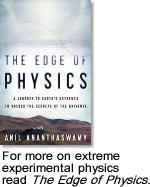Super flares in the Crab nebula

NASA’s FERMI gamma-ray space telescope has recorded the most violent outbursts from the Crab Nebula supernova remnant ever seen.
In the year 1054, light from a star that exploded about 6,500 years earlier reached Earth. Modern telescopes have given us an astounding view of the supernova remnant, in the form of the Crab Nebula. At the heart of the nebula is a neutron star that is rotating 30 times per second, sending periodic pulses of radiation towards Earth. The nebula is also a constant source of gamma-rays.
On April 12, FERMI detected gamma-ray flares that were 30 times more powerful than the average emissions from the nebula. Physicists think that a phenomenon called magnetic reconnection-in which the magnetic field lines near the neutron star cross and realign, leading to a release of extraordinary amounts of energy-is accelerating electrons to high energies. These electrons are then interacting with the magnetic field and emitting gamma-rays, which is what FERMI detected.
The most amazing fact that stands out from these observations is this: the region that is emitting these gamma rays is about the size of our solar system!
For more about these flares, see NASA’s press release.


